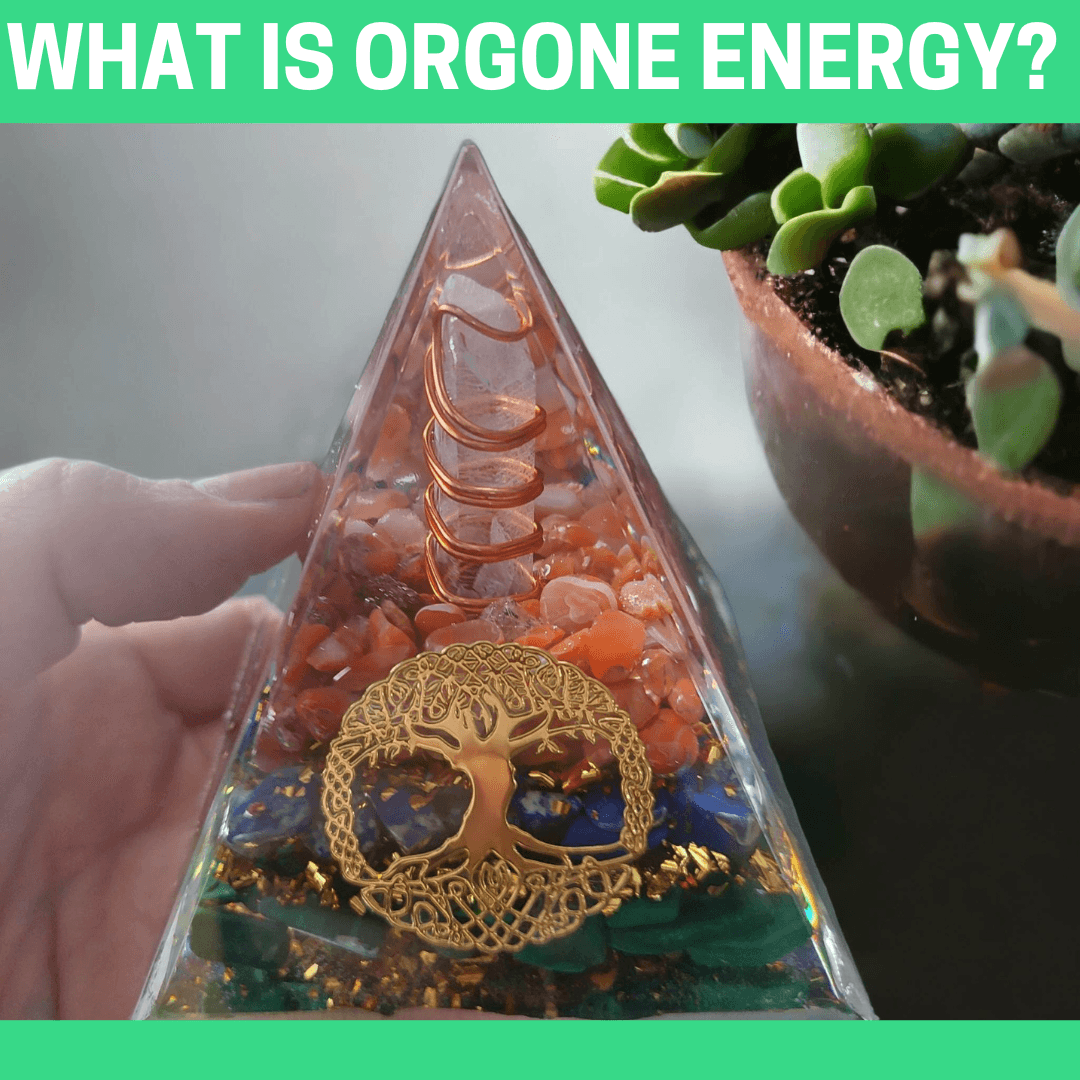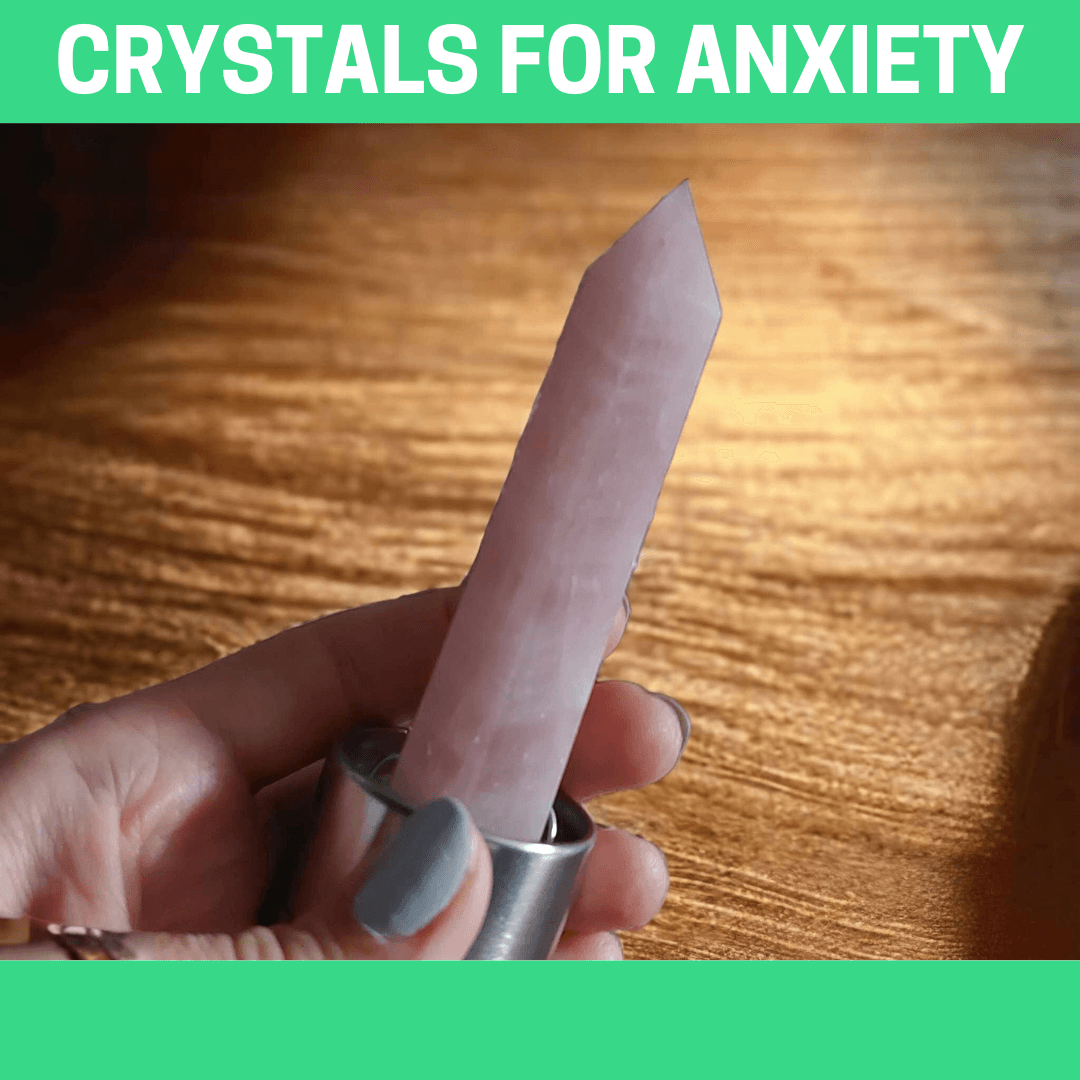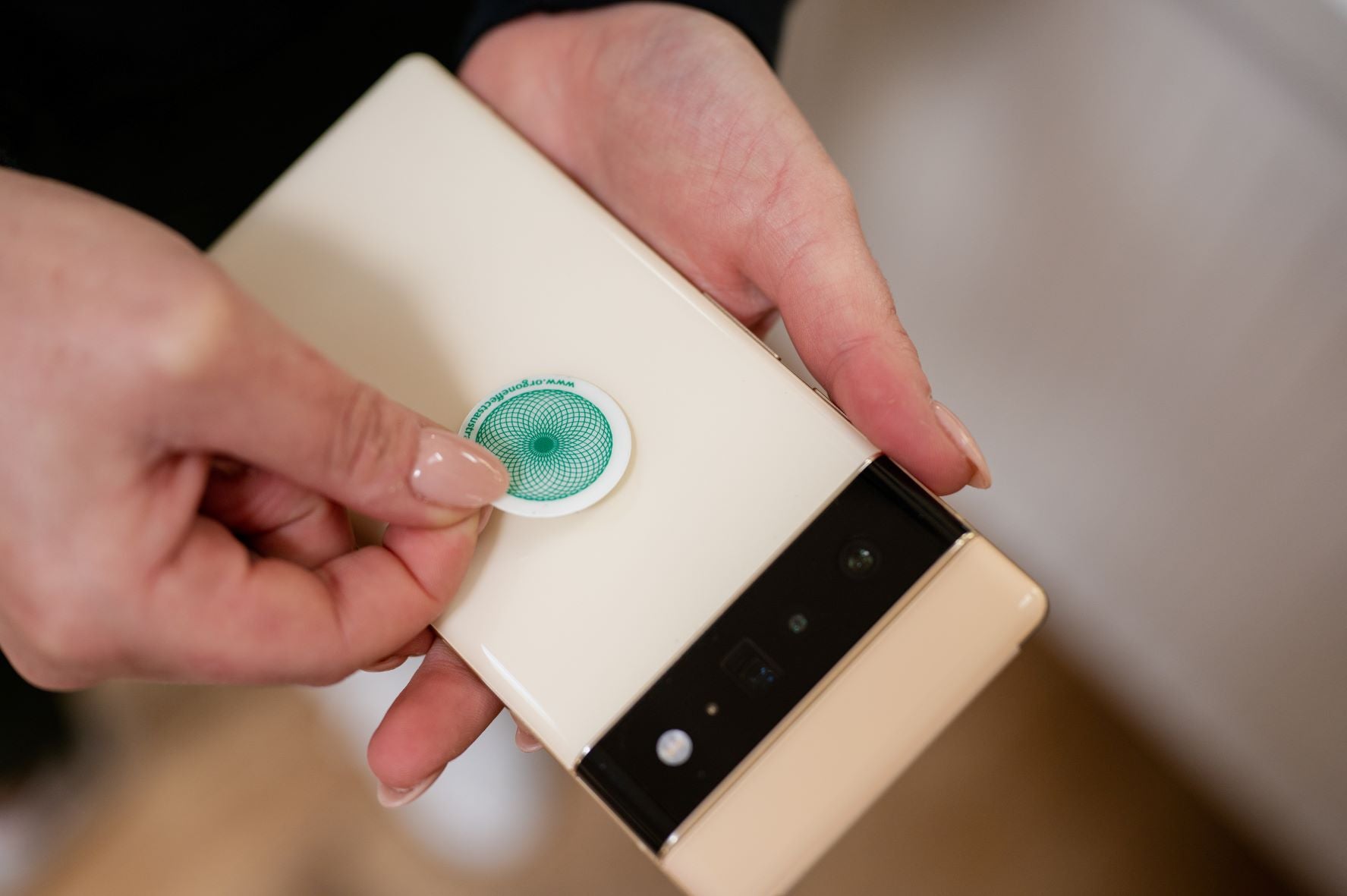The popularity of crystals has hit an all time high. But what exactly are crystals and where do crystals come from?
What Are Crystals?
Crystals are symmetrical structures made up of atoms, molecules, or ions in a repeating pattern known as a lattice.
Crystals are distinctive from other substances, they display clarity, precision, and transparency.
Crystals come in a diverse range of shapes, sizes, and colors, and they can be found both in nature and synthesized in laboratories.
Their characteristic properties, such as well-defined facets, regular angles between faces, and the ability to refract and diffract light, have made them invaluable in various scientific, industrial, and artistic applications.
Whether they form naturally within the Earth's crust or are carefully grown for specific purposes, crystals hold a special place in the realms of science, technology, and aesthetics, captivating our fascination and wonder.
How Are Crystals Formed?

As crystals are formed by a specific scientific process, the explanation of their formation is equally scientific.
Crystals are the result of an intriguing process wherein atoms or molecules organize themselves. This structure confers crystals their geometrical forms and properties.
Crystals can form through a range of methods, including evaporating a solution or via the solidification of molten rock.
One common way crystals form is through nucleation, which is the initial formation of a crystal seed. In the case of evaporative crystallization, a solution becomes saturated as the solvent evaporates.
At this point, the solute molecules begin to come together and form tiny crystal nuclei. These nuclei then grow by attracting more molecules from the solution until they develop into larger, well-defined crystals.
Another way crystals form is through the cooling and solidification of molten rock. When molten rock, or magma, cools and solidifies, it undergoes a process known as crystallization.
As the molten rock cools, the atoms or molecules within it slow down and arrange themselves into a crystalline structure. The rate at which the rock cools affects the size and shape of the crystals that form.
In some cases, crystals can also form under high pressures, like in the creation of diamonds.
Diamonds are formed deep within the Earth's mantle, where carbon is subjected to intense pressure and heat, causing it to crystallize into its stable form.
Overall, the formation of crystals involves the precise arrangement of atoms or molecules under specific growth conditions. Whether through evaporation, cooling, or extreme pressure, crystals come into existence in a variety of natural processes.
How to Tell if a Crystal is Real

Determining whether a crystal is real or authentic involves several factors that can vary depending on the type of crystal in question.
Here are some general guidelines to help you assess the authenticity of a crystal:
- Research and Knowledge: Start by researching the specific crystal you have in hand. Learn about its physical properties, origins, and common imitations. A solid understanding of the crystal's characteristics is crucial.
- Genuine Sources: Purchase crystals from reputable sources, such as established crystal shops, trusted dealers, or certified gemologists. At Orgone Energy, we have more than 30 years of experience in the wellness market.
- Price and Too Good to Be True Deals: Be wary of deals that seem too good to be true. High-quality, rare crystals usually come with a corresponding price tag. If a crystal is priced far below its market value, it may be a red flag.
- Physical Characteristics: Examine the crystal closely for any irregularities. Natural crystals often have imperfections, but fake ones may have noticeable flaws or inconsistencies in color, shape, or clarity. Look for inclusions or fractures, as these can be indicators of authenticity.
- Hardness and Scratch Test: Many crystals have specific hardness levels. You can perform a scratch test using a substance like a steel nail to check if the crystal is harder than the material it's scratched against. A real crystal should not scratch easily.
- Transparency and Clarity: Evaluate the crystal's transparency and clarity. Some fakes are made of glass or plastic and may appear too perfect. Natural crystals often have some level of cloudiness or inclusions
- Weight and Density: Real crystals are usually denser than common imitations. You can compare the weight of the crystal to its size; it should feel heavier than a synthetic counterpart of the same size.
- Refractive Index: Gemologists use specialized tools to measure a crystal's refractive index. While this may not be accessible to everyone, it's a reliable method for identifying authentic gemstones.
- Thermal Conductivity: Some gemstones have unique thermal conductivity properties. A thermal conductivity probe can help identify certain crystals by measuring how quickly they absorb heat.
- Certification: If authenticity is essential, consider purchasing crystals that come with certificates of authenticity from recognized gemological laboratories.
Remember that some natural crystals can be quite valuable, so if you're unsure about the authenticity of a crystal, it's best to seek the expertise of a professional gemologist or crystal expert who can provide a more accurate assessment using specialized tools and knowledge.
Where Are Crystals Found?

Crystals can be found abundantly in nature, occurring in various geological settings around the world.
One of the most well-known sources is within the Earth's crust, where minerals and gemstones form under specific geological conditions.
Crystals such as quartz, amethyst, and diamond are often found in mineral deposits, geodes, and within the matrix of rocks.
Geothermal hot springs and volcanic activity can also create ideal conditions for crystal formation. Some crystals like salt and gypsum can be found in evaporite deposits, where water has evaporated, leaving behind mineral crystals.
In caves and caverns, stalactites and stalagmites are formed from mineral-rich water dripping over time. Crystals can also grow in the cavities of rocks, forming striking and intricate structures.
Natural crystal formations are diverse and captivating, reflecting the unique geological processes that shape our planet.
Common Crystals Found in Nature
Amethyst:

Amethyst is a popular and widely recognized crystal known for its stunning purple color.
It belongs to the quartz family and is valued for its calming and soothing properties. It is believed to promote relaxation, balance emotions, and enhance spiritual awareness.
Amethyst can be found in various locations around the world, including Brazil, Uruguay, and Africa.
Calcite:

Calcite is a versatile and abundant crystal that comes in a range of colors, including white, yellow, blue, and green.
It is commonly found in sedimentary rocks and is known for its ability to amplify and cleanse energy. Calcite is believed to stimulate intellect, enhance memory, and promote emotional healing.
It can be found in countries like Mexico, the United States, and China.
Fluorite:

Fluorite is a beautiful crystal that comes in a variety of colors, including purple, green, and blue.
It is known for its vibrant hues and its ability to promote focus, clarity, and mental agility.
Fluorite is commonly found in hydrothermal veins and is often associated with minerals like quartz and calcite. It can be found in countries such as China, Mexico, and the United States.
Garnet:

Garnet is a deep red crystal that is associated with passion, vitality, and strength. It is commonly found in metamorphic rocks and is known for its grounding properties.
Garnet is believed to promote balance, vitality, and protection.
It is found in various locations worldwide, including India, Madagascar, and the United States.
Quartz:

Rose Quartz Crystal Water Bottle
Quartz is one of the most common crystals found in nature and is known for its clarity and high energy.
It comes in a variety of colors and forms, including clear quartz, rose quartz, and smoky quartz.
Quartz is believed to amplify energy, enhance spiritual growth, and protect against negative energy. It can be found in abundance worldwide, including Brazil, Madagascar, and the United States.
These common crystals offer a range of unique properties and are widely enjoyed for their beauty and metaphysical benefits. Whether used for spiritual practices, jewelry, or home decor, these crystals have captivated people for centuries with their stunning colors and positive energy.
The Scientific Study of Crystals

The scientific study of crystals, known as crystallography, encompasses various fields such as chemistry, biology, physics, and geology.
Crystallographers dive deep into the atomic arrangements and molecular structures of different materials to unlock the secrets of crystal formation.
Crystallography goes beyond simply observing the external characteristics of crystals. It explores their internal arrangement of atoms to understand how they come together to form these unique structures.
By studying the atomic and molecular interactions, scientists can gain insights into the physical properties, crystal growth patterns, and even the geometric shapes exhibited by crystals.
Underground Creation of Crystals

Crystals are mesmerizing formations that are born deep underground through a fascinating process known as crystallization.
It begins when mineral-rich fluids seep into the intricate network of fissures and cracks within the earth's crust. These fluids contain dissolved minerals such as quartz, calcite, and garnet, among others.
As these mineral-rich fluids find their way into the underground chambers, they encounter an environment characterized by intense heat and pressure. These conditions are pivotal in creating the perfect setting for crystal growth.
The high temperatures allow the mineral atoms to move more freely, while the tremendous pressures squeeze the atoms together, encouraging them to form orderly, repeating patterns.
Over time, as the mineral-rich fluids cool, the atoms begin to arrange themselves into the recognizable geometric shapes and symmetrical patterns that we associate with crystals. This process, known as crystallization, is responsible for the unique and intricate formations that we marvel at.
The underground creation of crystals is a marvel of nature, as it requires specific conditions of high pressures and temperatures. It is this remarkable combination that allows crystals to form and thrive deep beneath the earth's surface.
The result is a stunning array of crystal structures and colors that captivate and inspire us.
Geological Processes and Gem Formation

Gems and crystals are formed through fascinating geological processes that take place deep within the Earth.
These processes begin with the formation of rocks, which are composed of various minerals and organic materials.
Over millions of years, intense heat and pressure transform these rocks through three main processes: igneous, sedimentary, and metamorphic.

Igneous rocks are formed when molten rock, known as magma, cools and solidifies. This rapid cooling helps create the ideal conditions for crystal formation. As the molten rock cools, the atoms within it arrange themselves into a crystalline structure, forming unique and beautiful geometrical shapes. Quartz crystals are a well-known example of crystals formed in igneous rocks.

Sedimentary rocks, on the other hand, are formed through the accumulation and compression of sediments such as sand, mud, and organic matter. Within these sedimentary rocks, crystals can be formed as minerals dissolve in water and then precipitate out, eventually accumulating and forming larger crystals. Carbon atoms, for example, can form diamonds under extreme pressure and temperature within sedimentary rocks.

Metamorphic rocks are created when existing rocks are exposed to high temperatures and pressures, causing them to undergo significant changes. This process can result in the recrystallization of minerals, forming new and often larger crystals. Some well-known gems, such as sapphires and emeralds, are formed in metamorphic rocks.
Overall, geological processes play a crucial role in the formation of gems and crystals, creating unique and captivating specimens that we marvel at for their beauty and metaphysical properties.
How the Shifting Earth Affects Crystal Development

The shifting and movement of the Earth's crust play a crucial role in the development of crystals. When tectonic plates collide or slip past one another, it creates stress and pressure within the rocks and minerals deep underground.
This geological activity releases mineral-rich fluids into cavities and gaps in the earth's crust, providing the necessary ingredients for crystal growth. As these fluids cool and solidify, the shifting Earth's movements can cause the crystals to be subjected to different forces and environments.
This can result in various changes in crystal formation, such as alterations in their shape, size, and internal arrangement.
Additionally, the movement of the Earth can also expose previously buried crystals to new conditions, allowing them to undergo transformations and potentially develop new physical properties.
Therefore, the shifting Earth serves as a dynamic and ever-changing backdrop for the continuous development and evolution of crystals.
How to Grow Your Own Crystals

Growing your own crystals can be a fascinating and educational experience. To embark on this journey, you'll need a few basic materials and a clear understanding of the process.
- Begin by selecting a crystal-growing project and obtaining the necessary chemical compounds or solutions, which vary depending on the type of crystal you want to grow, whether it's sugar crystals, alum crystals, or others.
- Create a supersaturated solution by dissolving the chosen compound in hot water, ensuring the solution is saturated to the point where it can no longer dissolve more of the compound.
- Allow the solution to cool slowly and then initiate crystal growth by providing a surface for the crystals to form, such as a string or a seed crystal. Place the solution in a clean container and let it sit undisturbed for an extended period, allowing the crystals to slowly develop.
- Over time, you'll witness the growth of beautiful, geometric crystals. Patience is key, as crystal growth can take days or even weeks.
The process allows you to witness the marvels of crystalline structures firsthand and provides a sense of accomplishment as you nurture the growth of your own crystals.
How to Grow Sugar Crystals

Growing sugar crystals, also known as rock candy, is a fun and simple science experiment that can be done at home.
To start, you'll need a clean glass or jar, a wooden stick or string, water, and, of course, sugar.
- Begin by boiling water and stirring in as much sugar as it can dissolve, creating a supersaturated sugar solution.
- Pour this solution into your clean glass or jar.
- Suspend a wooden stick or string into the solution and ensure it's not touching the sides or bottom of the container.
- As the solution cools, sugar molecules will start to come together and crystallize on the stick or string.
- You can enhance the process by placing the container in a quiet location where it won't be disturbed and leaving it for several days. Over time, you'll see sugar crystals forming on your stick or string, gradually growing larger.
It's a delightful experiment that not only yields sweet results but also provides a great opportunity to learn about the science of crystallization.
How to Grow Alum Crystals

Growing alum crystals is a captivating and educational activity that can be done at home.
To get started, you'll need alum powder, which is readily available at most grocery stores, along with hot water, a clean glass or jar, a string, and a pencil or wooden stick.
- Begin by preparing a saturated alum solution by dissolving as much alum powder as possible in hot water, stirring until no more can dissolve.
- Allow the solution to cool.
- Tie a string around a pencil or wooden stick and place it into the clean glass or jar so that the string hangs down into the solution without touching the sides or bottom.
- As the solution cools, alum molecules will come together and form crystals on the string.
- Leave the container undisturbed in a quiet spot for several days or even weeks, depending on the size of crystals you desire.
Over time, you'll witness the growth of beautiful, geometric alum crystals that can be admired and studied. This hands-on experiment not only produces striking results but also offers insights into the fascinating world of crystal formation and structure.
How to Grow Epsom Salt Crystals

Growing Epsom salt crystals is a straightforward and engaging science experiment that can be done at home.
To begin, gather Epsom salt (magnesium sulfate), a clean glass or jar, a string, a pencil or wooden stick, and hot water.
- Start by preparing a saturated Epsom salt solution by dissolving as much Epsom salt as possible in hot water, stirring until no more can dissolve.
- Allow the solution to cool.
- Next, tie a string around a pencil or wooden stick and place it into the clean glass or jar so that the string hangs down into the solution without touching the sides or bottom.
- As the solution cools further, Epsom salt molecules will come together and form crystals on the string.
- Leave the container undisturbed in a quiet location for several days or weeks, depending on the size of crystals you desire.
Over time, you'll witness the growth of striking, needle-like Epsom salt crystals. This experiment not only yields visually appealing results but also provides valuable insights into the principles of crystal growth and chemistry.





